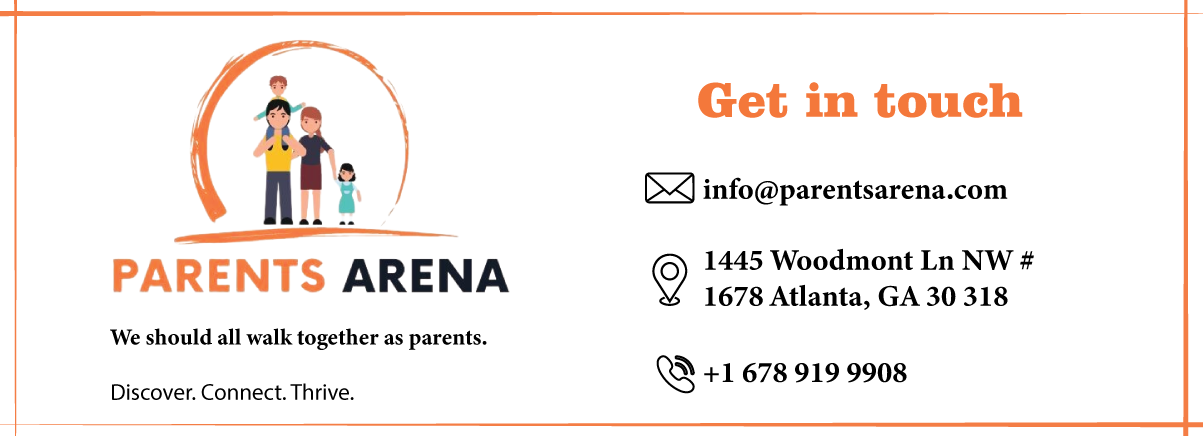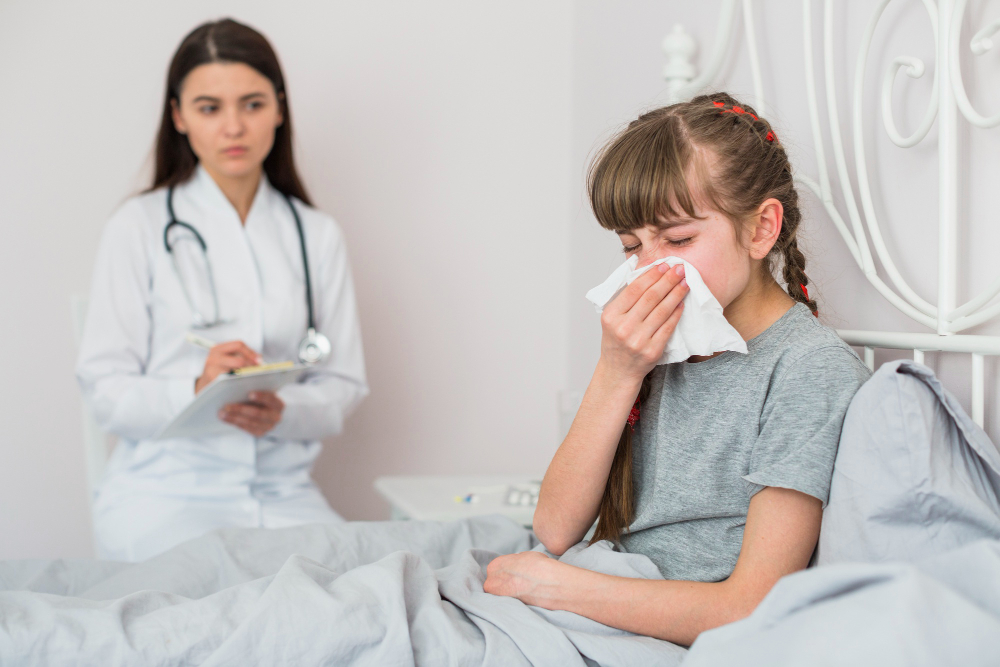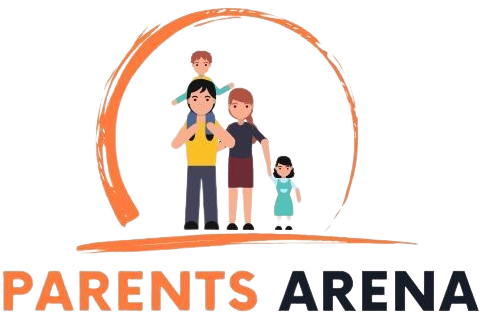News
Stay ahead of the curve with our dynamic news coverage, unveiling the cutting-edge trends that shape modern parenting.

7 Warning Signs Your Child Has a Toxic Friend
When it comes to children, parents should ensure everything connected to their lives is running smoothly. But sometimes, parents just concentrate on their kids’ grades and health, which is a huge blunder. Parents must show concern about how their kids feel emotionally and how good their social life is. Friends are a kid’s world, yet some friendships may be toxic rather than generous. This blog post talks about how a toxic friendship might be identified. Also, we will provide you with some parenting advice for toxic friends, so you can cope with the present situation.
Your Child Has a Friend Who Upsets Them Frequently
When your child comes home frequently sad, anxious, or angry after spending time with someone, take notice. There are periods when children argue; however, repeated instances of emotional distress can be a red flag. The typical toxic friend is somebody who makes others feel less worthy, left out, or manipulated. Recognizing this early is built into any parents guide to toxic friendships.
Does Not Respect the Rules
If your child has a friend who doesn’t respect rules, be it yours or that of their parents, there is a chance that the child might be a bad influence. A friend who refuses to come over because your home has rules is indicating that he/she does not like boundaries or being told what to do.
That sort of friend could try to get your child to breach your rules or to think that rules are not important; they could even talk back to adults or act as if no one has any right to tell them what to do. When a friend normally disregards rules and chooses chaos, it can have that impact on your child, which is unhealthy behavior. This is one of those key indicators of friendships that a parent ought to watch for.
Regular Teasing or Sensations of Worthlessness
Tiny joking here and there is acceptable among friends. But if your child is frequently being severely bullied or demeaned, that is simply not right. Toxic friends usually disguise open criticism or savagery as “just joking,” while this goes on, gradually degrading the kid’s self-worth.
Absent Two-Way Friendships
Mutual regard, empathy, and effort are the origins of wholesome relations. If your kid is consistently the one making plans, giving presents, or apologizing for things behind arguments, it might be a one-sided relationship. A toxic friend simply takes and never gives in return.
Unkindness
Observe how your child acts or feels after spending some time with a friend. If they seem unhappy, bitter, or doubtful about themselves, that could be a red flag. Some friendships are certainly just toxic, whether the friend is putting your child down, copying their concepts, or declining to praise their accomplishments; that is inappropriate.
Children have to be taught the difference between criticism and just being nasty. Just like anyone else, good friends do sometimes offer constructive feedback. However, if the feedback comes in the form of incessant teasing, derogatory remarks, and anything that makes a child feel insignificant, that is a toxic friendship.
They Don’t Feel Free to Speak Up
Every friendship should be a safe space. If your child is scared or uneasy about communicating their feelings to a particular friend, then that’s an unhealthy setup. Kids should never feel as if they have to “walk on eggshells” for another person’s happiness.
Change Is Pressured upon Them
Is your child suddenly acting very differently, changing their appearance, interests, or behavior just to groove with a friend? Kids do grow and evolve naturally, but when such changes occur due to peer pressure and incite an uncomfortable or extreme situation, it should be identified as a toxic one.
Parenting Advice for Toxic Friends
When you raise a child, you show them how to live. Among the greatest offerings you can set up for your child is his or her ability to set boundaries.
Setting limitations is not always bad, it actually works. Kids today are observing everything in their surroundings, so it has become imperative for parents to do so. To create a balanced and joyful environment for the kids, parents should teach them through daily life moments.
The relationships you have to teach your children how to choose their own. Set an example for them that is strong, loving, and respectful of themselves.
Every youngster must discover fellowships that encourage their blossoming rather than be violent toward it. Uncovering the aspects of a toxic friendship can equip your child to choose wholesome relationships that promote their well-being and happiness. If you’re after parenting tips about toxic friends, parenting advice to toxic friendships, or looking to identify friendship red flags for parents, staying engaged and observant can be the driving force after your kid’s success.

Modern Christian Baby Boy Names With Meanings
Choosing a name for your newborn is a thrilling occasion. Modern Christian baby boy names that are significant, related to the Scriptures, or that profess faith and love are appropriate. Therefore, we have prepared a checklist of Christian baby boy names with meanings to assist you in your journey of naming the little one.
Modern Christian Baby Boy Names Inspired by the Bible
Children are usually named after individuals mentioned in the Bible. These baby boy names bear an in-depth definition and have been utilized for eras. The subsequent names, being some of the prominent biblical names, may interest you:
Noah – Rest or comfort. Noah was a devoted servant of God. He created the ark to protect his home and creatures from the flood.
David – Beloved. David was the eminent ruler of Israel and was recognized for his knowledge and courage.
Isaac – Laughter. Isaac was the sworn son of Abraham and Sarah, which signifies happiness.
Daniel – God is my judge. Daniel was recognized for his faith in God and was born in the lion’s den.
Samuel – God has heard. An outstanding administrator, Samuel was thought to be the greatest visionary in Israel.
Elijah – My God is Yahweh. An astounding prophet who wrought extraordinary miracles.
Matthew – Gift of God. Matthew is one of the twelve apostles of Jesus and the author of the Gospel according to Matthew.
Modern Christian Baby Boy Names Signifying Faith and Strength
Some names found from outside the biblical texts do carry meanings worthwhile from the Christian characteristics: faith, strength, and God’s love. Read more about baby names at parents arena.
Ethan – Strong. Symbolizes strength and reliability.
Gabriel – God is my strength. The archangel delivered important announcements on behalf of God.
Joshua – The Lord is my redemption. The man who guided the Israelites into the Sworn Land.
Caleb – Trustworthy or faithful to God. In the daylights of Moses, Caleb was one of twelve spies dispatched to survey Canaan.
Nathan – He gave. Nathan lived in King David’s time and symbolizes one who gives.
Zion – Highest point or heavenly city. Zion is a place of relaxation and familiarity with God.
Contemporary Christian Baby Boy Names with Meaning
Modern yet meaningful with a Christian interpretation? Consider these options:
Levi – This signifies “united” or “connected.” Levi, the consequential forebear of the Levitic tribe, was one of Jacob’s sons.
Asher – The name implies either “glad” or “fortunate.” Asher was one of Jacob’s sons, symbolizing delight.
Ezra – “Help” or “helper.” Ezra was a preacher and writer who inspired the rebuilding of the Jewish religion.
Micah – Restated ” Does anyone compare to God?” Micah played a major role in evangelizing morality and kindness.
Tobias – Meaning “God is exemplary.” It remarkably shows the love and kindness of God.
Jonas – Meaning “Dove.” The name symbolizes peace as well as the Holy Spirit.
Silas – Meaning “Man of the forest” or “prayed for.” Silas traveled alongside the Apostle Paul in propagating Christianity.
Classic and Eternal Christian Baby Boy Names
These names have been there through the centuries and they are still admired in every Christian family.
John – This means “God is gracious.” He was the most prominent figure concerning Jesus.
Peter – Meaning “rock.” It was one of the very closest disciples of Jesus and the most solid foundation for the church.
Paul – Meaning “small” or “humble.” He was a great apostle and spread the word of Jesus through nations.
Mark – From Latin Martius, “warlike,” or “of Mars.” He is the writer of the Gospel of Mark.
Stephen – Crown. He was the first martyr of Christianity who showed great faith.
Thomas – So-called from the Greek word meaning “twin”. One of the twelve disciples of Jesus then carried Christianity into India.
Modern Christian Baby Boy Names That Express God’s Love
Some names bear meanings indicating God’s love and grace.
Emmanuel – Name meaning “God is with us.” Very wonderful name because it reminds me of the presence of Jesus.
Theodore – Beautiful name meaning “Gift of God.” Grateful for all the gifts received from God.
Christopher – Means bearer of Christ. The name represents carrying faith in the heart.
Dominic – Probably means “belonging to the Lord.” Expressed dedication towards God.
Felix – Seen as meaning “fortunate” or “blessed.” The name indicates joy and thankfulness.

Choosing modern Christian baby boy names is such a joyous occasion. You can have plenty of lovely options: maybe you want a biblical name; perhaps, something that conveys faith and strength; or, something very uncommon. A name is more than a word: it is loaded with meaning, carries history, and is a blessing for every child’s future. We hope the following list helps you choose the best name for your little one! Also, you can explore the baby girl name guide with meanings.

Top 100 Baby Girl Names Guide With Meanings
Choosing the ideal name for your baby girl is a significant decision. A name is more than just a word – it holds purpose, nature, and essence. To assist you in discovering a suitable one, we have assembled a checklist of 100 beautiful baby girl names with meanings. Whether you prefer classic, trendy, or unique names, this guide has something for everyone! Moreover, for those who are interested in finding baby boy names with meanings, we’ve got those too.
Top 100 Baby Girl Names and Their Meanings
- Ava – Symbol of life or a graceful bird
- Amelia – Hardworking and industrious
- Abigail – A father’s joy and source of happiness
- Aurora – The beauty of dawn and new beginnings
- Aria – A melodious song or expressive tune
- Aaliyah – Exalted and rising above
- Anna – A timeless symbol of grace
- Adeline – Noble and full of elegance
- Ariana – Holy, pure, and divine
- Alice – Noble and truthful at heart
- Bella – The essence of beauty
- Brooklyn – Small stream, where nature flows
- Bailey – A protector and law enforcer
- Blair – A vast field or open plain
- Beatrice – A joyful bringer of happiness
- Charlotte – A free-spirited woman
- Clara – Bright and full of clarity
- Camila – A young ceremonial attendant
- Chloe – Blooming with life and fertility
- Celeste – Heavenly and divine
- Daisy – A cheerful flower, the day’s eye
- Delilah – Delicate yet captivating
- Diana – A goddess of the moon and divine light
- Daphne – A laurel tree, symbolizing victory
- Dahlia – A vibrant and graceful flower
- Ella – Light and fairy-like charm
- Eleanor – A shining beacon of light
- Emma – Whole, universal, and timeless
- Eliza – A promise to God, steadfast and true
- Everly – A peaceful boar meadow
- Faith – A deep trust and belief
- Fiona – Fair and radiantly white
- Freya – Goddess of love and beauty
- Francesca – Free-spirited or from France
- Felicity – A life filled with happiness and fortune
- Grace – The essence of charm and goodness
- Gabriella – Strength from God
- Gemma – A precious jewel of great worth
- Giselle – A sacred pledge and promise
- Georgia – A dedicated farmer, strong and grounded
- Hannah – A blessing of grace and favor
- Hazel – Inspired by the strong hazel tree
- Hailey – A hero’s haven or a hayfield
- Hope – A bright light of positive expectation
- Harper – A skilled harp player and storyteller
- Isabella – Devoted to God with unwavering faith
- Ivy – A symbol of faithfulness and eternal life
- Iris – A rainbow of colors and beauty
- Imogen – A pure and innocent maiden
- Isla – A serene island, peaceful and strong
- Julia – Youthful, vibrant, and full of life
- Josephine – God’s promise of increase
- Jade – A precious green stone of wisdom
- Juliet – A romantic symbol of youthful love
- Jasmine – A fragrant and delicate flower
- Katherine – Pure and noble in heart
- Kayla – Crowned with laurels, a mark of victory
- Kinsley – A royal meadow, where strength thrives
- Kiara – Bright, clear, and full of light
- Kylie – A returning boomerang, full of energy
- Lily – A flower of purity and innocence
- Leah – Gentle and delicate
- Layla – A dark beauty, as mysterious as the night
- Luna – A radiant moon, glowing with grace
- Lucia – A bearer of light and hope
- Mia – A cherished and wished-for child
- Madeline – A strong tower, unwavering and secure
- Melody – A harmonious song of joy
- Maya – An enchanting dream or divine illusion
- Margaret – A rare and timeless pearl
- Nora – A symbol of honor and shining light
- Naomi – A gentle presence of pleasantness
- Nova – A Bright New Beginning
- Natalie – Born on Christmas, full of joy
- Nina – A little spark of fire and passion
- Olivia – An olive tree, representing peace
- Ophelia – A helping hand and kind soul
- Octavia – The eighth, strong, and unique
- Odette – A name rich in wealth and fortune
- Oriana – A golden light, radiant and warm
- Penelope – A weaver of fate and wisdom
- Paisley – A spiritual place of reflection
- Piper – A lively flute player, full of charm
- Phoebe – Radiant, shining with inner light
- Paige – A loyal helper and assistant
- Rose – A delicate and beautiful flower
- Riley – Brave and courageous in spirit
- Ruby – A fiery red gemstone, full of passion
- Rebecca – A bond of love and unity
- Rachel – A gentle ewe, symbolizing innocence
- Sophia – A timeless symbol of wisdom
- Scarlett – A bold and passionate red
- Serena – A calming and tranquil presence
- Savannah – A vast and open plain, free and wild
- Stella – A bright star shining in the night
- Violet – A delicate purple flower of grace
- Victoria – A triumphant symbol of victory
- Willow – A graceful tree, flexible yet strong
- Zoe – A vibrant life, full of energy
- Zara – A royal princess, blooming like a flower
Selecting baby girl names with meanings is a special pilgrimage. Consider the meaning, cultural significance, and how it sounds with your last name. Whether you choose a timeless classic or a modern favorite, the perfect name brings joy and meaning to your family.
Which name is your favorite? Let us know in the comments!

Scripture-Based Baby Names and Meanings
Among the most read and one of the most influential pieces of writing in attracting such an array of readers, the Bible has a rich history of being used for various events in life, including naming children, among other things. Through the ages, several beautiful baby names and meanings have been associated with deep meanings, often with integrity, divine characteristics, or stories of faith. If you are expecting a baby soon and want to name it something with historical significance and spiritual depth, the Bible can be your best source of inspiration.
So here we give you biblical baby names and meanings, along with the stories accompanying them.
Biblical Baby Names and Meanings for Boys
Isaiah
Meaning: The salvation of the Lord
Isaiah, one of the great prophets, is known for his prophecies regarding the coming of the Messiah. The name symbolizes hope and salvation brought by God. A name like Isaiah is chosen by parents hoping their son grows up with a passion for justice and faith.
Ethan
Meaning: Strong, firm
Ethan is a name that signals strength and stability. In the Bible, Ethan is known as wise, therefore his name represents someone firm in beliefs and full of wisdom.
Elijah
Meaning: My God is Yahweh
Elijah is one of the greatest baby names and meanings. Elijah, the prophet who opposed false prophets was a man with strong faith in God. His name reminds us of supremacy and trust in divine power.
Noah
Meaning: Rest, comfort
He is known for building the ark and saving mankind and other creations from the great flood. The name itself draws in the reader and symbolizes peace with comfort. Most often, parents who expect to receive their child with calmness and balance in the family would think of naming the little one Noah.
Samuel
Meaning: Heard by God
Samuel was a prophet and judge in ancient Israel, and his name signifies God hears our prayers. This name can be a beautiful reminder of ever-presence and readiness to hear our needs.
David
Meaning: Beloved
David was and is one of the most well-known biblical figures King of Israel man after God’s own heart. The name means love and affection and can be a substantial choice for a newborn you cherish a lot.
Matthew
Meaning: Gift of God
Matthew is one of the greatest baby names and meanings. Matthew, one of the 12 apostles, was also a tax collector before he became a follower of Jesus. Therefore, this name is said to be a precious gift from God.
Gabriel
Meaning: God is my strength
The name Gabriel belonged to one of the archangels, whose task was to deliver messages from God’s throne to wise persons. It is a name representing divine strength and guidance and is therefore ideal for the boy who is expected to show leadership with integrity.
Aaron
Meaning: High mountain, exalted, or strong
Aaron was the elder brother of Moses, whose spokesperson he was. His name evokes strength and leadership, which may just inspire a little one to be a strong leader with a heart for service.
Biblical Baby Names and Meanings for Girls
Abigail
Meaning: My father’s joy
She was a wise and beautiful maiden, who was later married by King David. The name Abigail characterizes a joyous spirit and wisdom. It would be hopeful with such parents that the child grows to be a blessing and source of joy and wisdom to other people.
Hannah
Meaning: Favor or grace
Hannah is a woman of faith and prayer; thus, her name signifies favor and grace from God. Hannah’s story bears witness to God listening to our prayers for parents who have confidence that prayer is powerful.
Sarah
Meaning: Princess
Sarah is one of the greatest baby names and meanings. In faith, Sarah was the wife of Abraham and the mother of Isaac. She believed in God’s promises, thus the meaning “princess,” denoting nobility, dignity, and honor, a very powerful name for little girls.
Ruth
Meaning: Friend, companion
Ruth was known for her loyalty and kindness as her actions toward her mother-in-law Naomi indicated. Therefore, the name Ruth describes friendship, loyalty, and devotion. The name depicts the bond of love and fidelity in a relationship.
Miriam
Meaning: Sea of bitterness, or rebellious
Miriam was the sister of Moses and a prophetess in her own right. Her name carries a sense of strength, resilience, and leadership. It can be a great choice for a girl who you hope will become a strong and faithful woman.
Elizabeth
Meaning: God is my oath
Elizabeth, the mother of John the Baptist, is a biblical figure who demonstrated deep faith and trust in God. The name Elizabeth conveys the idea of a promise or covenant with God and can be a perfect name for a child with a deep spiritual connection.
Deborah
Meaning: Bee
Deborah is one of the greatest baby names and meanings. Deborah was a prophetess and a judge in Israel, known for her wisdom and leadership, so her name may symbolize hard work and good industriousness. An excellent choice is for parents who believe, hope, and pray that their daughters will not only be intelligent but also hardworking.
Eve
Meaning: Life
Eve was the very first woman created by God and even holds a name synonymous with life and vitality in that it is the beginning of all things. Eve is a simple, yet powerful name for a girl.
Leah
Meaning: Weary
Leah was the first wife of Jacob and the mother of six sons, thus, reminding one that even in difficult times, God has plans for all His creation. The story of Leah teaches perseverance and hope.
Victoria
Meaning: Victory
Even though Victoria does not have an official mention in the Bible, the name is reminiscent of triumph and conquest among names. It speaks of victory on one’s journey toward the divine and earthly. It sounds beautiful for a girl who is to grow up to overcome hurdles and attain milestones in life.
Choosing baby names and meanings can be very personal and, for many, looking to the Bible, which could inspire some sense of tradition, might further link them to their faith. Those drawn to names denoting strength, wisdom, faith, or love might find themselves pleased by the number of biblical names, each carrying legends and meanings as marvelous as the others.

Top 100 Baby Boy Names Guide With Meaning
Choosing the ideal name for your baby boy is a memorable moment. It’s not solely a name—it’s part of his essence, something that will remain with him permanently. To help you out, here’s the top 30 baby boy names guide with meaning. You’ll find classic names, modern favorites, and amazing picks too!
Baby Boy Names with Meanings
Classic & Timeless Names
Liam – Strong-willed warrior
A popular choice, Liam is short, strong, and easy to say.
Noah – Rest, comfort
Noah is a gentle, timeless name often linked to strength and peace.
Ethan – Strong, firm
Ethan has been a favorite for years and reflects resilience and determination.
James – Supplanter (one who replaces another)
James is a classic name, steeped in history, meaning someone who takes the place of another.
Oliver – Olive tree (symbol of peace)
It is a nature-inspired name symbolizing peace and harmony.
Henry – Ruler of the household
A name of regal heritage, Henry symbolizes leadership and authority in a family.
Alexander – Defender of the people
A strong, historic name, Alexander signifies bravery and protection.
Benjamin – Son of the right-hand
A timeless biblical name, Benjamin represents favor and strength.
William – Strong protector
With royal associations, William embodies resilience and guardianship.
Joseph – He will add (God will increase)
A deeply spiritual name, Joseph conveys blessings and abundance.
Strong & Powerful Boys Names with Meaning
Wyatt – Brave in war
A rugged and bold name, Wyatt signifies courage in battle.
Leo – Lion (symbol of courage)
Short and powerful, Leo represents strength and bravery.
Caleb – Whole-hearted, faithful
A name of deep conviction, Caleb stands for loyalty and devotion.
Owen – Young warrior, noble
With Celtic roots, Owen symbolizes youthfulness and honor.
Samuel – Heard by God
A classic biblical name, Samuel conveys divine connection and wisdom.
Nathaniel – Gift of God
Elegant and meaningful, Nathaniel signifies divine blessing.
Julian – Youthful, full of life
A name that radiates energy, Julian symbolizes vitality and freshness.
Isaac – He will laugh
With biblical origins, Isaac represents joy and happiness.
Mason – Worker in stone
A strong occupational name, Mason reflects craftsmanship and stability.
Gabriel – God is my strength
A heavenly name, Gabriel represents divine support and fortitude.
Modern & Trendy Boy Names with Meaning
Jackson – Son of Jack
A stylish and versatile name, Jackson is both modern and classic.
Aiden – Little fire
This fiery name symbolizes passion and intensity.
Ezra – Help, protector
A name of wisdom and strength, Ezra stands for guidance and support.
Levi – Joined, attached
Short and trendy, Levi represents unity and connection.
Sebastian – Venerable, respected
An elegant and classic name, Sebastian conveys dignity.
Maverick – Independent, nonconformist
A bold name, Maverick represents free spirit and individuality.
Jaxon – God has been gracious
A modern twist on Jackson, Jaxon carries a strong and grateful meaning.
Zayden – Growth, increase
A unique and fresh name, Zayden symbolizes progress.
Grayson – Son of the gray-haired one
A stylish surname-turned-first name, Grayson represents wisdom.
Asher – Happy, blessed
A joyful name, Asher embodies positivity and fortune.
Biblical & Spiritual Baby Boy Names with Meanings
Elijah – My God is Yahweh
A strong biblical name, Elijah symbolizes faith and devotion.
Matthew – Gift of God
A name of divine blessing, Matthew carries deep spiritual significance.
Jacob – Supplanter
One of the most enduring biblical names, Jacob represents transformation.
Daniel – God is my judge
A powerful and righteous name, Daniel conveys wisdom and justice.
Isaiah – God is salvation
A deeply spiritual name, Isaiah represents divine guidance.
David – Beloved
A royal and biblical name, David signifies love and strength.
Jonathan – God has given
A name of generosity and blessing, Jonathan carries a strong meaning.
Micah – Who is like God?
A name of humility and faith, Micah embodies devotion.
Joshua – God is my salvation
A classic biblical name, Joshua represents protection and guidance.
Zion – A holy place
A name of spiritual significance, Zion symbolizes divinity and peace.
Nature-Inspired Baby Names for Boys with Meaning
River – Flowing water
A serene and adventurous name, River symbolizes movement and life.
Atlas – Enduring, the strength of the world
A name of mythological power, Atlas represents strength and perseverance.
Rowan – Little red-haired one, tree name
A nature-based name, Rowan symbolizes wisdom and protection.
Aspen – Tree with heart-shaped leaves
A fresh and modern name, Aspen embodies resilience.
Cedar – Strong, spiritual tree
A name representing strength and endurance, Cedar holds deep roots.
Flint – A hard, strong stone
A short and rugged name, Flint symbolizes toughness.
Phoenix – A mythical bird symbolizing rebirth
A powerful name, Phoenix represents transformation and resilience.
Kai – Sea, ocean
A short and energetic name, Kai embodies nature’s depth and power.
Forrest – Dweller near the woods
A name of peace and nature, Forrest represents tranquility.
Oakley – From the oak tree meadow
A strong and grounded name, Oakley symbolizes stability and growth.
Short & Simple Male Name Meanings
Luke – Light-giving
A name of brightness and clarity, Luke represents illumination.
Ryan – Little king
A regal yet simple name, Ryan signifies leadership.
Eli – Ascended, uplifted
A strong yet short name, Eli embodies spiritual elevation.
Finn – Fair, white
A sleek and stylish name, Finn represents purity.
Cole – Charcoal, dark
A short and cool name, Cole symbolizes depth and mystery.
Nico – Victory of the people
A trendy and international name, Nico conveys triumph.
Zane – God is gracious
A modern and sharp name, Zane symbolizes divine favor.
Tate – Cheerful
A lighthearted and joyful name, Tate embodies happiness.
Jude – Praised
A biblical and meaningful name, Jude represents gratitude.
Max – Greatest
A strong and confident name, Max symbolizes excellence.
Unique & Cool Boy Names and Meanings
Ryder – Knight, warrior
A modern and adventurous name, Ryder symbolizes strength.
Axel – Father of peace
A cool and edgy name, Axel represents harmony.
Blaise – Fire, flame
A fiery and dynamic name, Blaise embodies passion.
Cruz – Cross
A spiritual and sleek name, Cruz symbolizes faith.
Jett – Black gemstone
A sharp and modern name, Jett represents energy and power.
Knox – Round hill
A strong and grounded name, Knox conveys resilience.
Milo – Merciful, soldier
A name of duality, Milo symbolizes both kindness and strength.
Orion – Hunter, constellation name
A celestial name, Orion represents exploration and adventure.
Remy – Oarsman, rower
A stylish and unique name, Remy symbolizes travel and determination.
Zander – Defender of men
A cool variation of Alexander, Zander represents bravery.
Vintage & Old-School Boys Names and Meanings
Arthur – Bear, noble
A regal and legendary name, Arthur symbolizes strength and wisdom.
Felix – Happy, lucky
A cheerful and fortunate name, Felix radiates positivity.
Hugo – Mind, intellect
A sophisticated name, Hugo represents intelligence and deep thought.
Silas – Forest, woods
A nature-inspired name, Silas embodies peace and resilience.
Theodore – Gift of God
A timeless name, Theodore carries a sense of divine blessing.
Walter – Ruler of the army
A strong and classic name, Walter symbolizes leadership and strategy.
Louis – Famous warrior
A name of noble heritage, Louis represents bravery and honor.
Vincent – Conquering
A powerful name, Vincent embodies victory and strength.
Everett – Brave, strong boar
A bold and enduring name, Everett symbolizes tenacity.
Leonard – Brave lion
A name of courage, Leonard represents fierce strength and nobility.
International & Exotic Male Names with Meaning
Diego – Supplanter (Spanish origin)
A vibrant and adventurous name, Diego carries a strong spirit.
Luca – Light-giving (Italian origin)
A soft yet powerful name, Luca symbolizes brightness and guidance.
Mateo – Gift of God (Spanish origin)
A charming and classic name, Mateo represents divine blessing.
Thiago – May God protect (Portuguese origin)
A deeply meaningful name, Thiago conveys faith and protection.
Enzo – Ruler of the home (Italian origin)
A stylish and strong name, Enzo signifies leadership.
Hiro – Abundant, generous (Japanese origin)
A name of kindness and prosperity, Hiro represents generosity.
Emir – Prince, ruler (Arabic origin)
A regal and commanding name, Emir embodies leadership and power.
Nikolai – Victory of the people (Russian origin)
A sophisticated name, Nikolai represents strength and triumph.
Santiago – Saint James (Spanish origin)
A name of faith and tradition, Santiago holds deep historical significance.
Bodhi – Awakening, enlightenment (Sanskrit origin)
A spiritual and profound name, Bodhi symbolizes wisdom and peace.
Futuristic & Sci-Fi Baby Boy Names with Meaning
Apollo – God of prophecy, music
A legendary name, Apollo represents creativity and vision.
Caspian – Inspired by the Caspian Sea
A mysterious and adventurous name, Caspian evokes exploration.
Neo – New, young
A modern and fresh name, Neo symbolizes renewal and innovation.
Zephyr – Gentle wind
A poetic and airy name, Zephyr embodies freedom and movement.
Onyx – A precious black gemstone
A bold and striking name, Onyx represents strength and mystique.
Orpheus – A legendary musician in mythology
A name of artistry and myth, Orpheus signifies music and storytelling.
Solaris – Of the sun
A radiant and celestial name, Solaris symbolizes warmth and energy.
Jorah – Early rain, autumn rain
A unique and soothing name, Jorah conveys renewal and growth.
Dorian – Gift, belonging to Doria
A classic yet futuristic name, Dorian represents refinement.
Nova – A star that shines brightly
A luminous and cosmic name, Nova embodies brilliance and transformation.
So here you have the top 100 baby boy names guide with meaning.
Choosing a name is personal, and each name has a beautiful meaning behind it. Whether you’re drawn to traditional, trendy, or unique names, you’ll discover one that resonates with your heart and feels just right for your little one.

Top 30 Baby Names Guide With Meaning
Choosing the ideal name for your baby is a unique and compelling task. It’s not simply about discovering a name that chimes nicely; the significance behind the name can make it even more special. To assist you in this important decision, we’ve put together a checklist of baby names guide with meanings. Whether you’re looking for something traditional, modern, or unique, there’s something here for everyone.
Popular Baby Names Guide with Meaning
- Emma – A timeless name that means “whole” or “universal.” Perfect for a baby destined to be a loving, caring person.
- Liam – This strong name means “resolute protector.” It’s a great choice for a baby boy who you hope will grow up to be a brave and caring man.
- Olivia – A beautiful name meaning “olive tree,” symbolizing peace and fruitfulness.
- Noah – A classic name that means “rest” or “comfort,” ideal for a calm and gentle boy.
- Sophia – Meaning “wisdom,” this name is perfect for a little girl who will grow up to be smart and thoughtful.
Unique Baby Names
- Aria – A musical name that means “air” or “song,” perfect for a child who will bring harmony into your life.
- Milo – This quirky name means “soldier” or “merciful,” a great choice for a little boy who will grow up strong and kind.
- Luna – A mystical name meaning “moon,” ideal for a child who will light up your world.
- Ezra – A name with biblical roots meaning “help,” perfect for a boy who will grow up to be a dependable friend.
- Nova – Meaning “new,” this name is great for a baby who is your new star in the sky.
Traditional Baby Names Guide with Meaning
- Elizabeth – A regal name that means “pledged to God,” perfect for a girl who will grow up with a strong moral compass.
- William – A classic name meaning “resolute protector,” great for a boy who will be strong and caring.
- Charlotte – This elegant name means “free man,” symbolizing independence and strength.
- James – A strong and timeless name meaning “supplanter,” perfect for a boy who will grow up to be a leader.
- Margaret – Meaning “pearl,” this name is ideal for a girl who will be as precious as a gem.
Nature-Inspired Baby Names
- Willow – A serene name meaning “slender” or “graceful,” ideal for a gentle and graceful girl.
- River – A flowing name, perfect for a child who will have a free spirit.
- Ivy – Meaning “faithfulness,” this name is great for a girl who will grow up strong and enduring.
- Ash – A simple, strong name inspired by the ash tree, perfect for a boy who will be solid and dependable.
- Sage – A name meaning “wise,” ideal for a child who will grow up thoughtful and insightful.
Modern Baby Names Guide with Meaning
- Aiden – A modern name meaning “little fire,” perfect for a boy with a fiery spirit.
- Zoe – A lively name meaning “life,” great for a girl who will bring joy and energy to your life.
- Levi – A trendy name meaning “joined” or “attached,” perfect for a boy who will be close to your heart.
- Mia – A short and sweet name meaning “mine” or “wished-for child,” ideal for your precious little girl.
- Jaxon – A modern twist on Jackson, meaning “God has been gracious,” perfect for a boy who is a blessing.
Names with Powerful Meanings
- Ethan – A strong name meaning “firm” or “strong,” perfect for a boy who will grow up to be resilient.
- Isabella – Meaning “devoted to God,” this name is ideal for a girl who will grow up with a strong spirit.
- Alexander – A powerful name meaning “defender of the people,” perfect for a boy who will stand up for others.
- Grace – A name symbolizing elegance and kindness, ideal for a girl who will be a graceful presence in your life.
- Gabriel – Meaning “God is my strength,” this name is perfect for a boy who will grow up strong in spirit.
Choosing a name is a big decision, but it’s also a fun one. Take your time, explore the baby names guide with meaning options, and most significantly, choose a name that feels right for you and your little one. After all, it’s a name they’ll carry with them for the rest of their life!

What You Need To Know About RSV Symptoms in Kids
As a parent or guardian, it’s imperative to be well-informed about standard childhood illnesses and their symptoms. Respiratory Syncytial Virus (RSV) is one such infection that can affect children, particularly infants and toddlers. Understanding RSV symptoms in kids is essential for convenient diagnosis and cure. Throughout this blog, we will discuss what RSV is, its symptoms in children, and prevention measures.
What is RSV?
RSV – Respiratory Syncytial Virus is a common respiratory virus that can impact people of all ages, but it’s most concerning for infants and young children. RSV is highly infectious and usually spreads through respiratory droplets when an infected person coughs or sneezes. It typically circulates during the fall and winter months, making it a prevalent concern for parents during these seasons.
Common RSV Symptoms in Kids
RSV can emulate the signs of the common cold or flu in older children and adults. Nonetheless, in infants and young children, RSV can lead to more severe respiratory symptoms. Here are the specific RSV symptoms in kids:
Coughing and Sneezing: Children with RSV usually have a persistent cough and may sneeze frequently.
Runny or Stuffy Nose: RSV can cause nasal congestion, leading to a runny or stuffy nose.
Fever: A low-grade fever is expected in RSV-infected children, but some may have higher fevers.
Wheezing: Wheezing, a high-pitched whistling sound when breathing, RSV symptoms in kids cases. It can be a sign of lower respiratory tract involvement.
Rapid Breathing: Infants with RSV may breathe more rapidly than usual, and their nostrils may flare with each breath.
Difficulty Breathing: In severe cases, RSV can cause significant breathing difficulties, including retractions (sucking in the chest muscles), which require immediate medical attention.
Irritability and Reduced Activity: Infants and young children with RSV may become fussier than usual and have decreased activity levels.
Loss of Appetite: RSV can lead to a reduced appetite in children, which can result in dehydration if not managed properly.
Blue Lips or Nails: This is a rare but serious symptom of severe RSV infection and requires immediate medical attention.
Preventing RSV Infections
Preventing RSV infections is vital, especially for high-risk children. Here are some preventive measures you can take:
Handwashing: Frequent handwashing is the first line of defense against RSV or RSV symptoms in kids and other contagious illnesses.
Avoiding Close Contact: Keep sick individuals away from babies, and limit close contact with anyone showing symptoms.
Cough and Sneezing Etiquette: Teach children to cover their mouths and noses when coughing or sneezing.
Vaccination: While there is no RSV vaccine, pregnant women can receive a vaccine called Synagis, which can reduce the severity of RSV in newborns.
Good Hygiene Practices: Disinfect frequently touched surfaces, and avoid sharing items like cups and utensils.
Respiratory Syncytial Virus can cause mild to severe symptoms in children, particularly in infants and those with underlying health conditions. Being aware of RSV symptoms in kids, its risk factors, and prevention strategies is essential for protecting your child’s health. If your child exhibits severe symptoms or has risk factors for severe RSV, consult a healthcare professional promptly. With the right knowledge and precautions, you can help keep your child healthy and safe from RSV and other contagious illnesses.

What Parents Should Know About The Flu In Children?
Flu refers to respiratory disorders caused by a wide variety of viral strains.
Among the culprits behind this ailment are the influenza virus, parainfluenza viruses, Adenovirus, RSV, and others.
Predominantly affecting school-age youngsters, the flu disseminates through interpersonal contact, droplets in the air, and even aerosols. Its customary presentation includes a runny nose, high fever, hacking cough, reddened eyes, throbbing headache, and generalized bodily discomfort. The typical recovery period for a child grappling with the flu spans from three to five days.
However, on occasion, complications may arise, such as viral pneumonia or bronchiolitis. These complications exhibit rapid breathing, diminished oxygen saturation, lethargy, and diminished food intake, potentially necessitating hospitalization and in some severe cases, even care within an intensive care unit.
Navigating a child’s bout with the flu entails measures like administering paracetamol for fever control, inhaling steam to ease respiratory discomfort, ensuring ample rest, refraining from sending them to school, encouraging hydration, and providing nourishing sustenance. If a child afflicted by the flu does attend school, the risk of spreading the illness to others or contracting secondary viral or bacterial infections looms large, reinforcing the urgency of school avoidance during the flu episode.
Vigilance for potential complications remains paramount, particularly when a child exhibits oral aversion, rapid breathing, or somnolence. In such instances, promptly seeking consultation from a pediatrician at a nearby medical facility is prudent.
As the adage goes, prevention trumps cure. Consequently, what preventive measures should be embraced in the battle against the flu?
Foremost, refraining from sending an ailing child to school is imperative. Secondly, upholding rigorous hand hygiene and donning masks, akin to the practices during the era of Covid, contribute to containment efforts. Thirdly, adhering to judicious medical intervention during illness, eschewing self-medication and unwarranted antibiotic use, is advised.
Lastly, adhering to the annual administration of flu vaccines, as recommended by pediatric healthcare providers, forms a pivotal component of the defense strategy against this seasonal ailment.
